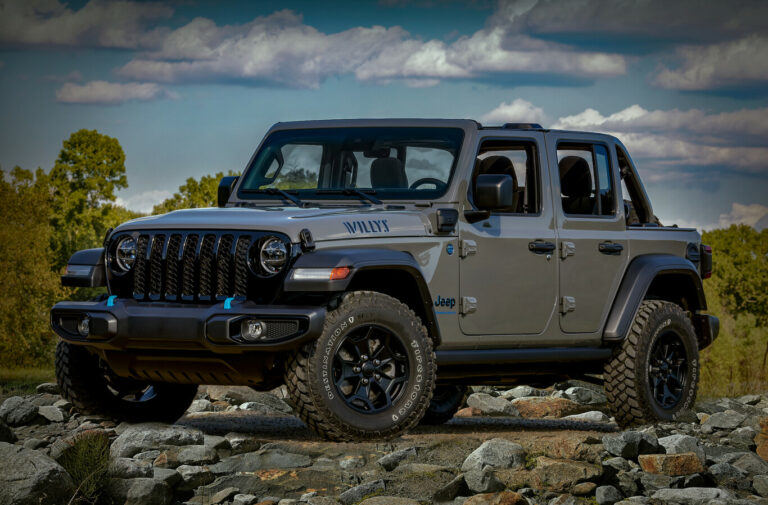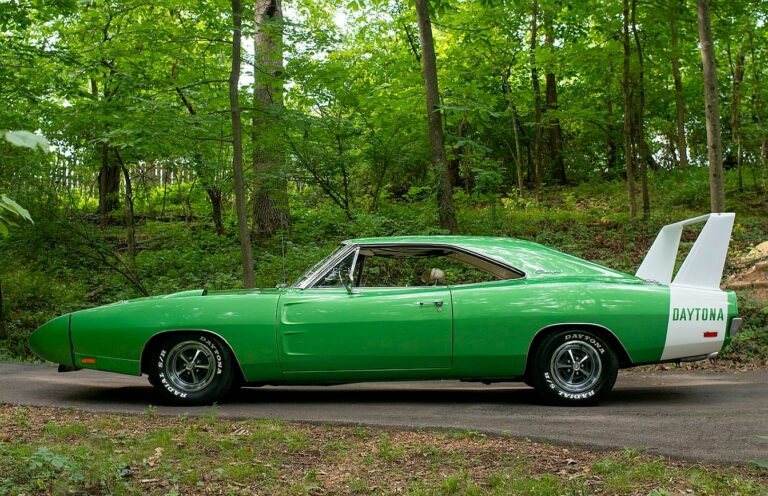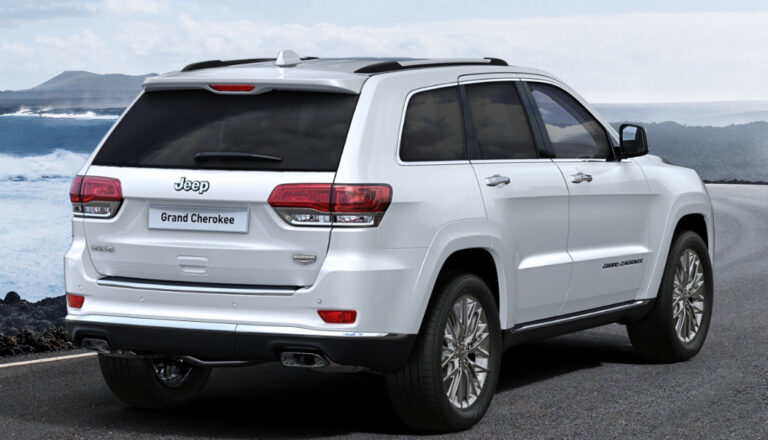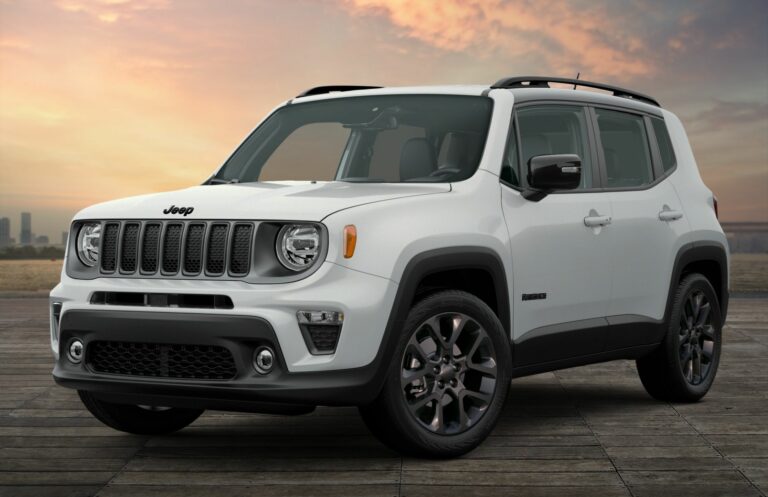1946 Jeep Willys For Sale: Your Guide to Owning a Post-War Legend
1946 Jeep Willys For Sale: Your Guide to Owning a Post-War Legend jeeps.truckstrend.com
The year 1946 marked a pivotal moment in automotive history. World War II had just concluded, and the iconic military Jeep, a symbol of American ingenuity and ruggedness, was transitioning from the battlefield to civilian life. The result was the Willys-Overland CJ-2A, the first mass-produced civilian Jeep, and the 1946 model stands as a testament to this transformation. For enthusiasts and collectors, a "1946 Jeep Willys For Sale" isn’t just an advertisement; it’s an invitation to own a tangible piece of post-war American heritage, a vehicle that helped shape modern utility and off-road capability.
This comprehensive guide will delve into everything you need to know about acquiring a 1946 Willys Jeep, from its historical significance and the benefits of ownership to practical buying advice, potential challenges, and what to expect in terms of pricing.
1946 Jeep Willys For Sale: Your Guide to Owning a Post-War Legend
The Legacy of the 1946 Willys Jeep: A Post-War Icon
The story of the 1946 Willys Jeep begins with its wartime predecessor, the Willys MB. Born out of an urgent military need for a light reconnaissance vehicle, the MB proved its mettle on battlefields around the world, earning the affectionate moniker "Jeep." As peace returned, Willys-Overland recognized the immense potential for a civilian version, capitalizing on the Jeep’s reputation for durability and versatility.
The CJ-2A (Civilian Jeep, 2nd version after a brief prototype CJ-1) was introduced in 1945, with the 1946 model being one of the earliest and most sought-after production years. It retained much of the MB’s robust simplicity, featuring the reliable "Go-Devil" L-head four-cylinder engine, a T-90 three-speed manual transmission, and a two-speed transfer case providing four-wheel drive. Distinguishing features from its military cousin included a tailgate (a revolutionary feature for a utility vehicle at the time), larger headlights, a side-mounted spare tire, and a host of civilian-oriented options like a rear seat, heater, and even a power take-off (PTO) for agricultural implements.
The 1946 CJ-2A quickly became a workhorse across America, serving farmers, ranchers, construction workers, and adventurers alike. Its simple design, rugged construction, and unparalleled off-road prowess made it an indispensable tool for a nation rebuilding and expanding. Today, the 1946 Willys Jeep is celebrated not just for its historical significance but also for its enduring charm, mechanical simplicity, and the unique driving experience it offers.
Why Own a 1946 Willys Jeep? Benefits Beyond Transportation
Owning a vintage vehicle like the 1946 Willys Jeep offers a unique blend of benefits that extend far beyond simply having a mode of transport:
- Historical Significance: You’re not just buying a car; you’re acquiring a piece of American and automotive history. Each drive is a connection to the past, reminding you of the vehicle’s pivotal role in post-war society.
- Simplicity and Durability: The CJ-2A was built for utility and longevity. Its mechanical systems are straightforward, making maintenance and repairs relatively easy for those with basic mechanical knowledge. There’s less complex electronics to worry about compared to modern vehicles.
- Vibrant Community: The Willys Jeep community is passionate and welcoming. Owners’ clubs, online forums, and events provide invaluable resources for parts, technical advice, and camaraderie. You’ll never feel alone in your ownership journey.
- Investment Potential: While not a guaranteed appreciating asset, well-maintained, original, or professionally restored 1946 Willys Jeeps tend to hold or even increase their value over time, especially as fewer examples remain in good condition.
- Unique Driving Experience: Driving a 1946 Willys is an unfiltered experience. You feel the road, hear the engine, and appreciate the mechanical nature of the vehicle. It’s a conversation starter wherever you go and offers a refreshing contrast to modern, insulated cars.
- Versatility and Fun: Despite its age, a 1946 Willys Jeep can still tackle light off-road trails, participate in parades, attend car shows, or simply serve as a fun weekend cruiser. Its open-air design (when equipped with a soft top or no top) makes for an enjoyable ride.
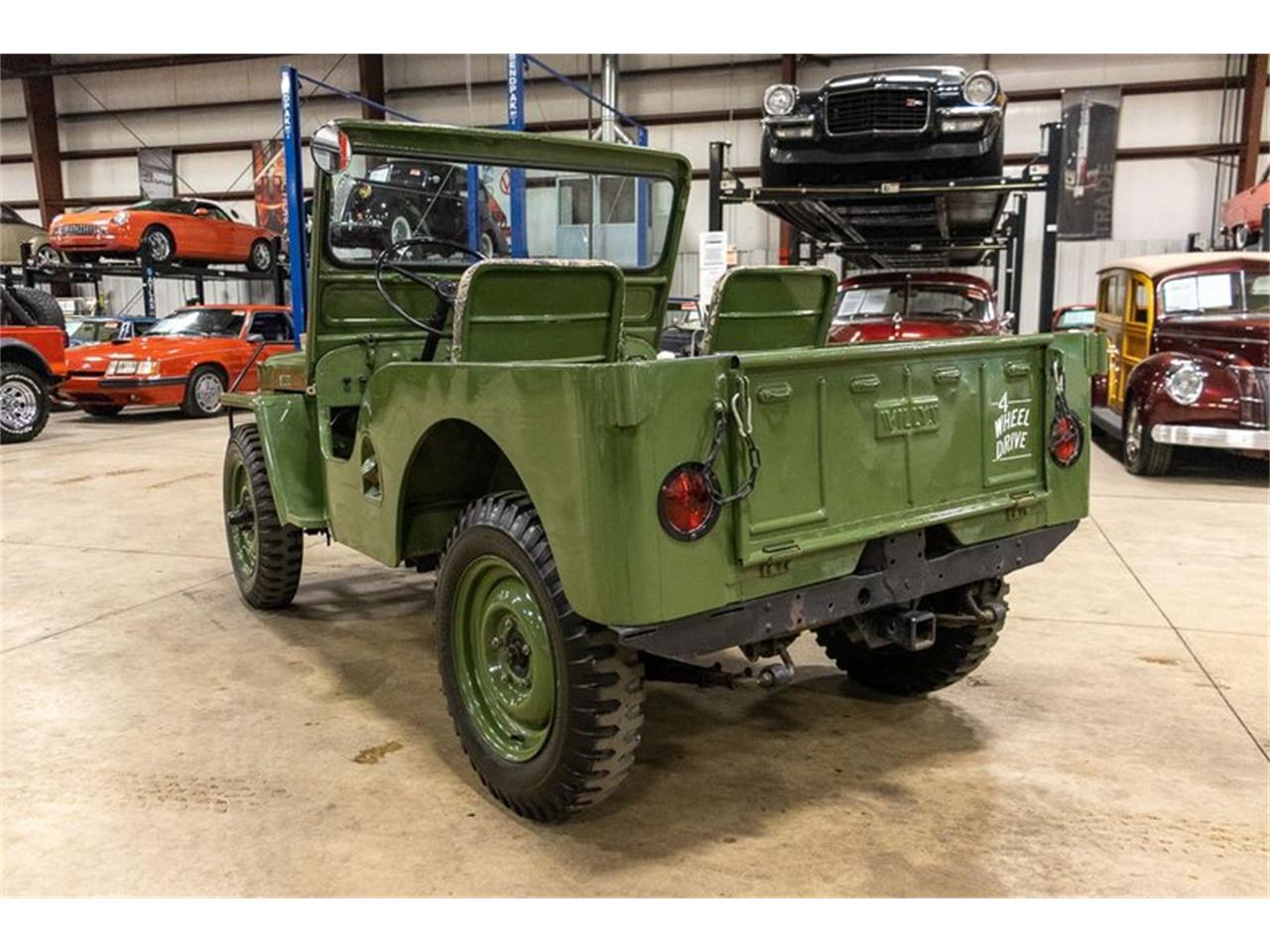
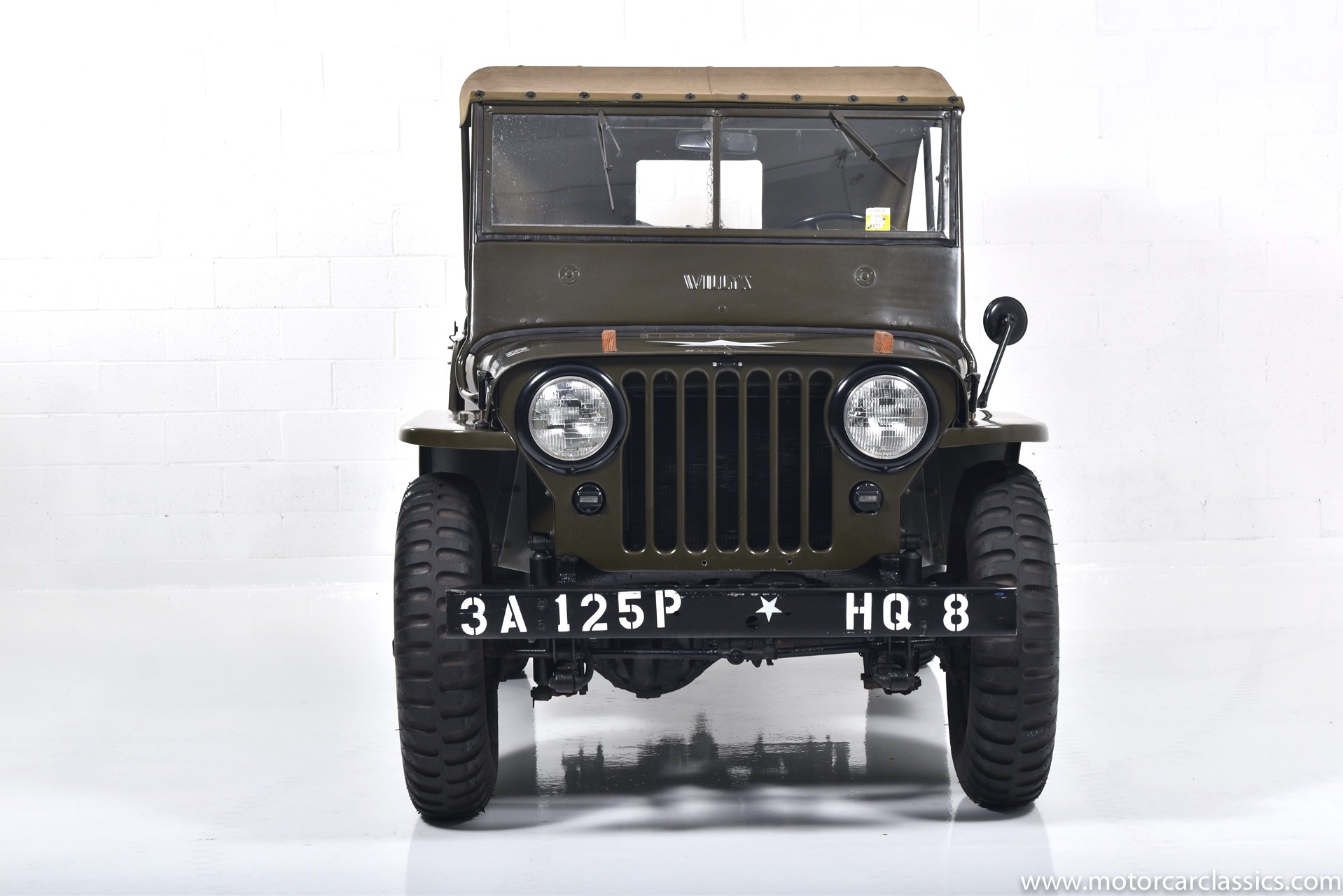
Navigating the Market: A Buyer’s Guide to the 1946 Willys Jeep
Finding the right 1946 Willys Jeep requires patience and diligence. Here’s how to approach the search:
Where to Look:
- Online Marketplaces: Websites like eBay Motors, Hemmings, Bring a Trailer, ClassicCars.com, and specific vintage Jeep forums are excellent starting points.
- Classic Car Dealers: Some dealerships specialize in vintage vehicles and may have Willys Jeeps in their inventory.
- Auctions: Live and online auctions (like Mecum, Barrett-Jackson, or local auction houses) can offer opportunities, but require quick decision-making and thorough pre-bidding research.
- Word-of-Mouth & Clubs: Joining local or national Willys Jeep clubs can connect you with owners looking to sell or lead you to hidden gems.

Types of 1946 Willys Jeeps You’ll Find:
The condition and originality of a 1946 Willys Jeep will significantly impact its price and the amount of work required.
- Project Vehicles: These are typically non-running or heavily rusted examples requiring full restoration. They are the most affordable but demand significant time, money, and mechanical skill.
- Drivers/Runners: These Jeeps are mechanically sound enough to be driven but may have cosmetic flaws, deferred maintenance, or non-original parts. They offer a good balance for those wanting to enjoy the vehicle immediately while slowly improving it.
- Partially Restored: Some Jeeps may have had certain systems (e.g., engine, transmission, bodywork) restored, while others remain original or require attention. Understand what has been done and what remains.
- Fully Restored: These vehicles have undergone a complete, professional restoration, often to concourse (show) quality. They command the highest prices but offer a turn-key solution with minimal immediate work.
- Modified/Restomod: Some owners choose to update their Willys with modern engines, transmissions, suspension, or other components for improved performance and comfort. While not for purists, these can be excellent "drivers" if well-executed.
Key Inspection Points (What to Look For):
A thorough inspection is crucial before purchase. If possible, bring a knowledgeable friend or hire a pre-purchase inspection (PPI) specialist.
- Frame: Inspect for rust, cracks, bends, or poor repairs, especially around spring hangers and body mounts.
- Body: Check for rust, particularly in the floorboards, hat channels (underneath the floor), fenders, and tailgate. Look for signs of excessive body filler (bondo).
- Engine: Listen for unusual noises (knocks, rattles), check for leaks, excessive smoke from the exhaust, and proper oil pressure. A compression test can reveal internal engine health.
- Transmission & Transfer Case: Test all gears, including reverse, and engage 4WD (high and low range). Listen for grinding or whining noises. Check for leaks.
- Axles & Drivetrain: Inspect universal joints (U-joints) for play, check for leaks from differential covers.
- Steering & Suspension: Look for excessive play in the steering wheel, worn tie rod ends, loose wheel bearings, and sagging leaf springs.
- Electrical System: Ensure all lights, gauges, and accessories work. Check for aftermarket wiring that might be poorly done.
- Brakes: Test pedal feel (firm, not spongy), listen for grinding, and check for leaks in brake lines or wheel cylinders.
- Originality: If originality is important, verify the VIN, engine number, and look for period-correct features like the specific dashboard layout, gauges, and unique early CJ-2A details.
- Paperwork: Ensure a clear title is available and that the VIN on the title matches the vehicle.
Important Considerations Before You Buy
Owning a vintage Jeep is a commitment. Consider these points carefully:
- Budget Beyond Purchase Price: The sale price is just the beginning. Factor in insurance (often cheaper for classic vehicles), registration, potential immediate repairs, and ongoing maintenance. If buying a project, restoration costs can quickly exceed the vehicle’s value.
- Parts Availability: Good news! Due to the Willys Jeep’s popularity and robust aftermarket, many mechanical and body parts are reproduced and readily available from specialty suppliers. However, specific original components can be harder to source.
- Mechanical Aptitude: Are you comfortable with basic mechanics, or do you have a trusted mechanic who works on vintage vehicles? These Jeeps are simpler than modern cars, but they still require attention.
- Storage: A 1946 Willys Jeep benefits greatly from covered storage to protect it from the elements and prevent rust.
- Intended Use: Will it be a daily driver (challenging, but possible with modifications), a weekend cruiser, a show vehicle, or an off-road toy? Your intended use will dictate the condition and modifications you should look for.
- Pre-Purchase Inspection (PPI): Always, always, always get a PPI from an independent mechanic specializing in vintage vehicles if you’re not an expert yourself. It can save you from costly surprises.
Tips for a Successful Purchase
- Research Thoroughly: Understand the nuances of the 1946 CJ-2A. Join forums, read books, and learn what makes a good example.
- Set a Realistic Budget: And stick to it. Don’t fall in love with a Jeep that’s beyond your financial comfort zone.
- Be Patient: The right Jeep might not appear overnight. Don’t rush into a purchase.
- Ask Lots of Questions: Don’t be afraid to ask sellers about the vehicle’s history, maintenance records, and any known issues. Request detailed photos and videos.
- Join Online Forums/Clubs: These communities are invaluable for advice, identifying reputable sellers, and even finding Jeeps for sale before they hit public markets.
- Negotiate Respectfully: There’s almost always some room for negotiation, especially if you can point out areas needing attention.
Challenges and Solutions
- Rust: The biggest enemy of vintage steel. Solution: Thorough pre-purchase inspection, professional rust repair, and diligent maintenance post-purchase.
- Originality vs. Usability: Deciding whether to keep it period correct or add modern conveniences (e.g., 12V conversion, turn signals, seat belts). Solution: Define your priorities. A purist will value originality, a driver might prefer subtle upgrades for safety and reliability.
- Finding Knowledgeable Mechanics: Not all shops are equipped to work on vintage vehicles. Solution: Seek out specialty shops, join clubs for recommendations, or learn to do basic maintenance yourself.
- Shipping: If buying remotely, transport can be costly. Solution: Research reputable enclosed auto transport companies. Factor shipping into your budget.
1946 Jeep Willys For Sale: Estimated Price Guide
The price of a 1946 Willys Jeep can vary widely based on its condition, originality, mechanical soundness, and location. This table provides a general estimate:
| Condition Category | Description

